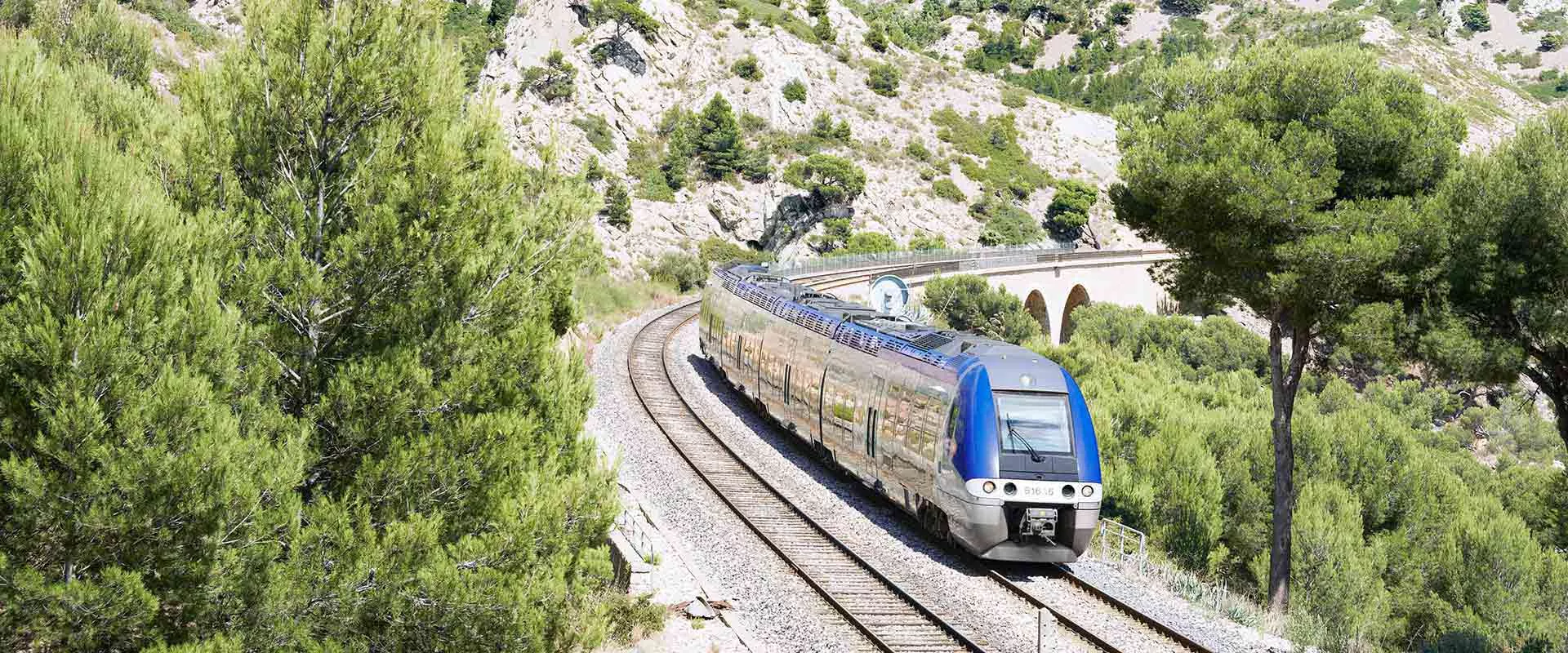
Decarbonization: Rail sector players team up in white paper
The rail industry’s white paper, “Decarbonizing transport in France: what rail can do”, shows how sector players are combining forces to help with the green transition.
Speeding up the modal shift to rail
Trains are a sustainable means of transport and play a key role in France’s National Low-Carbon Strategy (SNBC), which aims to speed up the modal shift to rail. To fight global warming—a clear priority and the major challenge of the 21st century—the entire rail industry is pulling together to take coordinated decarbonization measures.
Putting shared conviction into words
The white paper puts the industry’s shared conviction into words, setting goals, defining the scope of decarbonization actions, identifying ways to expedite efforts, making commitments and laying the groundwork for collaboration.
Rail Industry Decarbonization Forum - Interview with SNCF Chairman and CEO Jean-Pierre Farandou
Rail Industry Decarbonization Forum - Interview with FIF President Louis Nègre
Suppliers on the front lines
Each year, over 18,000 French suppliers account for 97% of our purchases, representing more than €13 billion in all. These companies are the lifeblood of our country’s regional economies, indirectly employing nearly 250,000 people. They are also on the front lines in spreading our decarbonization goals throughout the industry.
An array of actions
Seeking alternatives
- Facilitate the transition: provide funding, raise awareness, etc.
- Make rail systems and products more energy efficient: replace thermal engines with alternatives including hybrid systems, batteries and hydrogen; launch the new TGV INOUI 2025 and light rail options; switch to sustainable design; and thoroughly overhaul industrial sites.
- Adopt alternative solutions: biofuel, relamping (using LEDs), modal shift, connections to urban heating networks.
Driving change
- Spur energy-saving initiatives, including eco-driving, eco-parking, energy-efficient digital technologies and practices, and building management systems.
- Extend product life by improving quality, reusing and recycling materials, and extracting value from waste: rails, ballast, sleepers and digital terminals.
- Minimize the impact of industrial processes: use electric furnaces to manufacture eco-friendly rails, etc.